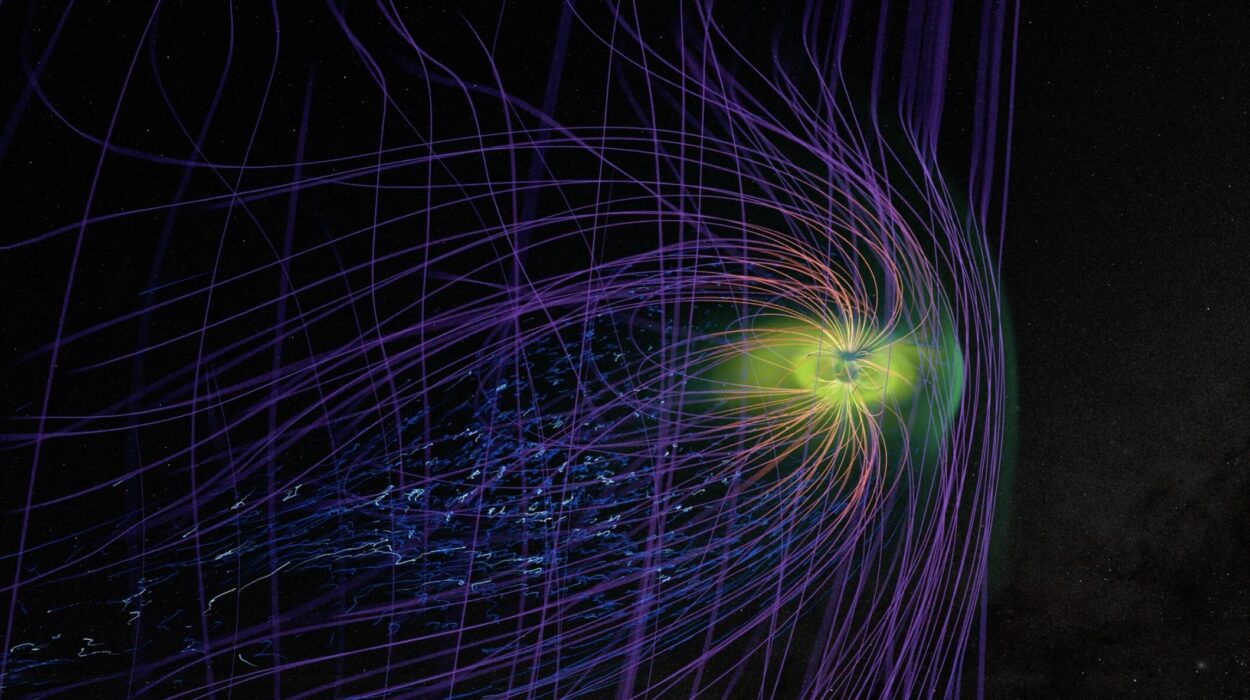Ever since humanity first looked up at the night sky with wonder, we’ve asked one question more than any other: Are we alone? The vastness of the cosmos, the billions of stars, and the countless planets orbiting them spark not just curiosity, but a longing to know whether life exists beyond our pale blue dot. But more than that, we wonder: What would it look like?
Would alien life be familiar, or utterly bizarre? Would it walk on legs, swim with fins, glide through clouds, or grow silently as intelligent fungus? Could it even think and feel, love or hate, organize into societies, wage wars, or explore the stars as we do?
As we stand on the threshold of a new era of space exploration, these are no longer questions just for science fiction. They’re scientific inquiries backed by new tools, telescopes, missions, and data. And while we haven’t found alien life—yet—the deeper we understand life on Earth, the better we can imagine the possibilities beyond it.
What Is Life, Anyway?
Before we can speculate on what life might look like on other planets, we need to define what life is. This, surprisingly, is no simple task.
On Earth, life is generally characterized by a few shared traits: metabolism, reproduction, evolution, and cellular structure. Most terrestrial life is carbon-based, uses water as a solvent, and relies on DNA or RNA to pass on genetic information. These shared chemical and biological processes are so universal here that they form the foundation of biology.
But if we restrict ourselves only to what life looks like on Earth, we risk missing the bigger picture. Could life elsewhere operate on an entirely different chemistry? Could it be based on silicon instead of carbon? Could it exist in liquid methane instead of water, or breathe chlorine instead of oxygen?
The most exciting prospect is that life doesn’t have to look like anything we know. To find life beyond Earth, we must first open our minds to forms that might seem alien in every sense of the word.
The Role of Environment: Life Adapts to Its Planet
Just as life on Earth has adapted to every extreme—from boiling hydrothermal vents to arid deserts—life on other planets would be shaped by the unique pressures and possibilities of its home world.
Imagine a planet with stronger gravity than Earth. Any land-based life here would likely be compact, low to the ground, and built to withstand enormous force. Think squat, dense creatures with reinforced skeletons or exoskeletons.
Now imagine a planet with a thin atmosphere. Here, life might evolve to be incredibly hardy against radiation or perhaps develop subsurface habitats. On a planet bathed in constant light, photosynthesis could reign supreme, with plant-like life dominating the biosphere.
The conditions—gravity, temperature, atmospheric makeup, radiation levels, availability of liquid solvents—will dictate everything from an organism’s shape to its energy sources to its societal complexity.
In this way, life on other planets might be familiar in function but alien in form. It will almost certainly not resemble us, because we are products of Earth’s specific story. Their stories will be different—and so will they.
Water Worlds: Alien Life Beneath Endless Oceans
One of the most promising environments for extraterrestrial life is a water world—a planet completely covered in ocean with little or no landmass. The Kepler space telescope has already identified several such exoplanets, and more are expected as our detection methods improve.
What might live in the endless seas of a water world?
Given what we know of Earth’s oceans, life might begin near hydrothermal vents on the ocean floor. These ecosystems, fueled not by sunlight but by chemosynthesis, could host a dazzling array of life: microbial mats, tube worms, bioluminescent scavengers, and intelligent cephalopod-like creatures with fluid intelligence and decentralized nervous systems.
If the oceans are shallow, light could penetrate to greater depths, allowing for the evolution of photosynthetic plankton-like organisms, kelp forests, or reef-like structures.
In terms of intelligent life, one challenge would be the absence of fire—a critical technology for early human civilizations. Aquatic beings might never invent metallurgy, but they could develop tools using hardened coral, bones, or shell. Perhaps their science would be biological rather than mechanical.
Communication might be auditory (like whale song), electrical (as with electric fish), or even luminous, with language constructed from patterns of light emitted in shifting pulses.
An advanced civilization might build floating cities, or manipulate tides and currents to harness energy. They might revere the deep ocean trenches or map the stars from air-filled domes at the surface.
Desert Planets: Life in the Furnace
Now picture a planet much like Arrakis from Dune: a dry, scorching desert world with blistering days and freezing nights. It might orbit a red dwarf star, receiving little light but intense flares.
Life here would need to be tough. Very tough.
Surface life might be armored with thick shells to protect against radiation and conserve water. Nocturnal behaviors would be essential. Creatures could burrow deep underground, surfacing only during the brief twilight hours to feed or mate.
Plants—or their alien equivalents—might grow slowly, store water in huge internal reservoirs, or have root systems that stretch miles underground. Perhaps they don’t photosynthesize at all, but instead harvest energy from mineral oxidation or geothermal heat.
Insects, if they exist, could dominate. Swarms of dust-loving arthropods might cover the surface, their chitin plates shimmering in faint sunlight. Larger predators might be slow-moving ambush hunters, using vibration or heat detection rather than vision.
Intelligent life would have to master the use of limited water and energy. Their civilizations might be subterranean, with great underground halls carved from stone, or bioengineered structures that recycle every molecule of waste. Religion and culture might revolve around water as the holiest substance, and survival would demand cooperation, discipline, and reverence for resource management.
Frozen Worlds: Beneath the Ice
In our own solar system, some of the most promising candidates for alien life lie not on hot, Earth-like planets—but beneath the icy crusts of moons like Europa, Enceladus, and Ganymede.
These moons are far from the Sun and covered in thick ice, but they harbor liquid oceans beneath their surfaces, kept warm by tidal forces from their parent planets. On Earth, we’ve discovered that similar environments—like deep-sea vents—can support entire ecosystems, completely independent of sunlight.
What would life on Europa look like?
Most likely, it would begin as simple microbes. But over time, if the oceans are stable, evolution could lead to complex life: perhaps worm-like scavengers, filter-feeding anemone creatures, or tentacled hunters using electroreception.
They may never know the sky or the stars—but intelligence could still arise. Perhaps their “fire” would be chemistry, and their “light” would be bioluminescence. Maybe they use sonar to communicate, and navigate using magnetic fields.
Civilizations could be shaped not by territory but by thermal zones—communities living around the warmth of hydrothermal vents, sharing resources in an otherwise endless, dark ocean.
Gas Giants: Life in the Skies
Could life float in the clouds of a gas giant like Jupiter?
While the crushing pressures of the deep atmosphere may be inhospitable, there is a hypothetical “habitable layer” high in the clouds where temperature and pressure might allow for life.
Carl Sagan famously proposed this idea in the 1970s. In this zone, he imagined a kind of airborne ecosystem: small, balloon-like “floaters” feeding on sunlight and chemical nutrients; “sinkers” falling through the atmosphere before being consumed or reborn; and “hunters,” fast-moving creatures that prey on the floaters.
Such life would have to be incredibly light—perhaps giant sacs filled with hydrogen or helium. They might be semi-transparent, jellyfish-like, with tendrils to gather nutrients from the gas. Communication might be vibrational or based on shifts in color and light.
There would be no solid ground, and any civilization would have to master flight. Structures might be living things themselves—giant airborne hives or mobile colonies.
We don’t yet know if gas giants can support life, but the chemistry in their clouds (including water, methane, and ammonia) makes it a fascinating possibility.
Silicon-Based Life: Another Way to Build Biology
Carbon isn’t the only element that can form complex chains and molecules. Silicon, just below carbon on the periodic table, has long been proposed as an alternative.
Silicon is more stable at high temperatures and could allow for life on worlds where water boils and carbon chains degrade.
Imagine a rocky, volcanic world with sulfurous skies and lava rivers. Here, silicon-based organisms might use liquid methane as a solvent and evolve with a rigid, crystalline structure. They might grow like stalagmites or reefs but possess distributed intelligence—each cell a neural node.
Such life could be photosynthetic with reflective shells, or chemotrophic, drawing energy from volcanic reactions. Their movement might be slow—glacial even—but deliberate and calculating.
Intelligent silicon life could develop computers and cities grown like mineral gardens, entire civilizations etched in crystal, communicating in patterns of vibration or radio waves.
We would barely recognize them as alive—but alive they would be.
Intelligent Life: Minds Under Alien Suns
What might intelligent life look like elsewhere in the galaxy?
That depends on how we define intelligence. Tool use? Language? Art? Technology? Culture?
Even on Earth, intelligence appears in many forms—from chimpanzees to dolphins to octopuses. Each evolved based on environment and necessity. There’s no reason to believe alien intelligence would mirror ours.
Perhaps it will be an aquatic civilization that sings to communicate. Or an avian species that evolved flight and developed astronomy from the sky. Maybe hive-minded insects form a collective intelligence greater than the sum of its parts.
They might not have eyes—but sense infrared. They might not have hands—but manipulate objects with tendrils, magnetic fields, or sound. Their perception of time could be slower or faster, their emotions and morals incomprehensible.
And if their civilization is millions of years older than ours, their technology could be indistinguishable from nature—or magic.
They might visit other planets not with metal ships, but with spores, probes, or digital minds. Or maybe they watch us from afar, curious but cautious, unwilling to interfere.
The Great Silence: Where Is Everybody?
Despite the possibilities, we still haven’t found any signs of life beyond Earth. This is the Fermi Paradox: if life is common in the universe, where is everybody?
There are many possible answers. Life might be rare. Intelligent life might destroy itself before reaching the stars. Civilizations might communicate in ways we don’t understand, or they might avoid us deliberately.
Or perhaps—we’re just early.
Our search is only beginning. The James Webb Space Telescope, next-gen planetary missions, and advances in synthetic biology may soon reveal answers we’ve craved for millennia.
But even without evidence, the question remains one of the most important we can ask. Because it tells us not just about the cosmos—but about ourselves.
Conclusion: Life As the Universe Knows It
In the end, we may never fully grasp the range of what life can be. The universe is ancient, vast, and strange. Life—if it exists elsewhere—will be shaped by that strangeness.
It may be soft or sharp, cold or hot, slow or swift, dark or dazzling. It may think in math or music, in light or gravity, in ways no human brain could ever grasp.
But wherever it is—whether hidden beneath an icy moon, floating in a gas giant’s clouds, swimming in alien oceans, or watching us from the shadows of distant stars—it will be a testament to the power of nature, evolution, and the drive to endure.
And if we find it—or if it finds us—the universe will no longer be just stars and silence.
It will be alive.






